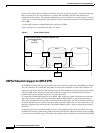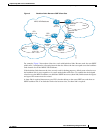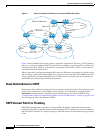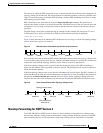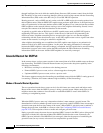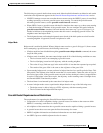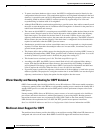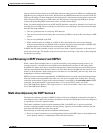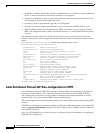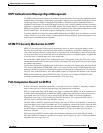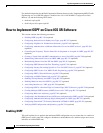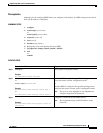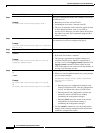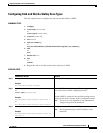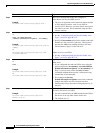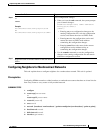
Implementing OSPF on Cisco IOS XR Software
Information About Implementing OSPF on Cisco IOS XR Software
RC-192
Cisco IOS XR Routing Configuration Guide
OL-14356-01
• Establishes a neighbor relationship with the corresponding multi-area interface on the neighboring
router. A mixture of multi-area and primary interfaces is not supported.
• Advertises an unnumbered point-to-point link in the router link state advertisement (LSA) for the
corresponding area when the neighbor state is full.
• Created as a point-to-point network type and is not configurable.
• Created only on native point-to-point interfaces, such as Packet-over-SONET (PoS) or serial.
• Inherits the Bidirectional Forwarding Detection (BFD) characteristics from its primary interface.
BFD is not configurable under a multi-area interface; however, it is configurable under the primary
interface.
The multi-area interface inherits the interface characteristics from its primary interface, but some
interface characteristics can be configured under the multi-area interface configuration mode as shown
below:
RP/0/RP0/CPU0:router(config-ospf-ar)# multi-area-interface POS 0/1/0/3
RP/0/RP0/CPU0:router(config-ospf-ar-mif)# ?
authentication Enable authentication
authentication-key Authentication password (key)
commit Commit the configuration changes to running
cost Interface cost
database-filter Filter OSPF LSA during synchronization and flooding
dead-interval Interval after which a neighbor is declared dead
describe Describe a command without taking real actions
distribute-list Filter networks in routing updates
do Run an exec command
exit Exit from this submode
hello-interval Time between HELLO packets
message-digest-key Message digest authentication password (key)
mtu-ignore Enable/Disable ignoring of MTU in DBD packets
no Negate a command or set its defaults
packet-size Customize size of OSPF packets upto MTU
pwd Commands used to reach current submode
retransmit-interval Time between retransmitting lost link state advertisements
root Exit to the global configuration mode
show Show contents of configuration
transmit-delay Estimated time needed to send link-state update packet
RP/0/RP0/CPU0:router(config-ospf-ar-mif)#
Label Distribution Protocol IGP Auto-configuration for OSPF
Label Distribution Protocol (LDP) Interior Gateway Protocol (IGP) auto-configuration simplifies the
procedure to enable LDP on a set of interfaces used by an IGP instance, such as OSPF. LDP IGP
auto-configuration can be used on a large number of interfaces (for example, when LDP is used for
transport in the core) and on multiple OSPF instances simultaneously.
This feature supports the IPv4 unicast address family for the default VPN routing and forwarding (VRF)
instance.
LDP IGP auto-configuration can also be explicitly disabled on an individual interface basis under LDP
using the igp auto-config disable command. This allows LDP to receive all OSPF interfaces minus the
ones explicitly disabled.
See Cisco IOS XR Multiprotocol Label Switching Configuration Guide for information on configuring
LDP IGP auto-configuration.



